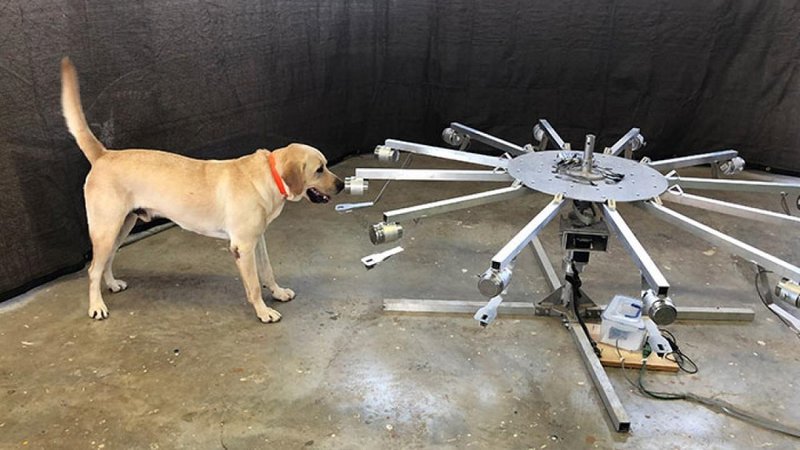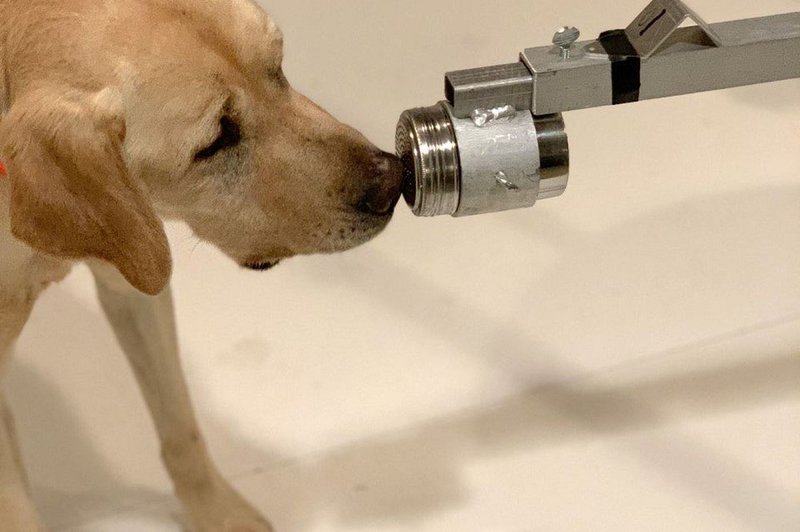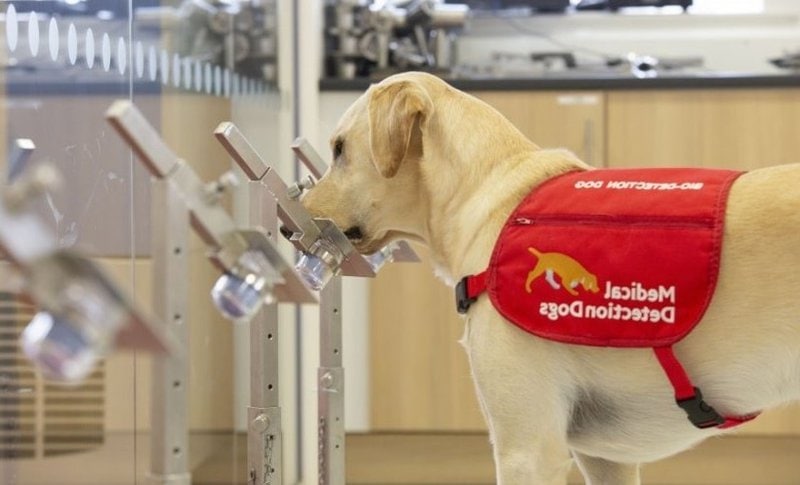A proof of concept study whose findings were published in the journal PLOS One on 14th April 2021 has shown that trained dogs can detect the COVID 19 virus from pee samples with a 96% accuracy.
For a long time now, dogs have been known to be able to detect various diseases from the scent markers given off by the disease. It has also been previously proven that dogs are able to detect the Coronavirus signature in sweat and saliva samples.
Building on these known facts, the researchers decided to carry out their study to determine whether dogs could detect the virus from urine samples.
Efficacy Of Dog Detection Tests

In the study, one Belgian Malinois and eight Labrador Retrievers were trained to recognize the scent of SARS-CoV-2 from urine samples taken from patients were Coronavirus positive. The samples from positive patients, as well as control samples from patients who had tested negative were provided by the Children’s Hospital of Philadelphia and the Perelman School of Medicine.
The samples were first taken to Penn’s Medicine Biosafety Level 2+ laboratory, where heat and detergent were used to inactivate the virus, making the urine samples safe for the dogs to sniff.
After training the dogs for three weeks, the researchers found that the dogs could detect the COVID-19 positive samples with an accuracy rate of 96%, on average. The results from the study showed a 99% specificity rate, meaning that the dogs barely gave any false positives. However, the sensitivity rate was much lower at 68%. This means that some false negatives were identified.
According to a statement from Cynthia Otto, the director of the School of Veterinary Medicine Working Dog Center at the University of Pennsylvania and the senior author of the study, the low sensitivity rate can be attributed to their strict testing methods. Whenever the dogs passed over a positive sample once without giving any response, the researches marked it as a negative.
Feasibility Study And Practical Application

Despite the promising results from the study, don’t expect hospitals and testing laboratories to drop the nasal and throat swab, in favor of a urine sample test any time soon. This is because the “dog test” is still far from being ready for practical applications.
While the dogs involved in the study identified the COVID-19 positive samples with stunning accuracy, they were only able to do so on the samples they were trained with. When completely new samples were used, the dogs did not distinguish between positive and negative samples.
In addition, the dogs had trouble with samples from a patient who had just recovered from the virus. Despite the patient having tested negative, the dogs kept identifying the sample as a positive.
The researchers report that in order for the “dog test” to become applicable in real world situations, they will have to conduct more tests and procure more diverse samples. Actually, Otto reported that they were in the process of collecting hundreds of samples for use in future studies.
With time and more tests, however, the researchers hope that they will perfect the “dog test” and make it a viable method for testing for SARS-CoV-2.





